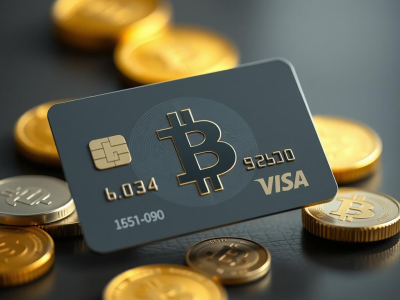
Integrating AI with blockchain technology leads to substantial optimization of payment processes. By utilizing smart contracts, businesses can automate transactions, reducing the need for intermediaries and minimizing human error. This automation not only accelerates transaction times but also enhances overall efficiency.
The decentralized nature of blockchain ensures that each transaction is recorded in a secure manner, providing an immutable audit trail. This significantly boosts security, making it more challenging for fraudsters to manipulate data. With AI analyzing transaction patterns, anomalies can be detected in real-time, further safeguarding against potential threats.
This fusion of technologies promotes continuous innovation within the payment landscape. As organizations adopt these solutions, they witness improved cash flow management and reduced operational costs, ultimately leading to a more streamlined experience for users. Embracing this technological shift is not just advantageous; it’s becoming a necessity for businesses aiming to stay competitive.
Reducing Transaction Times
Implementing blockchain technology combined with AI can drastically reduce transaction times in payment processes. By utilizing smart contracts, businesses can automate agreements that execute automatically once predefined conditions are met, eliminating manual interventions that slow down transactions.
Optimization of data processing through AI algorithms accelerates validation procedures. Machine learning models can analyze transaction patterns and detect anomalies in real-time, ensuring security while expediting the approval process.
Blockchain's distributed ledger technology enhances transparency and traceability, allowing all parties to verify transactions instantly. This reduces the need for intermediaries, consequently shortening the time required to complete payments.
Incorporating these innovations leads to significant increases in operational efficiency. Financial institutions adopting these technologies report a reduction in transaction times by as much as 70%, which directly impacts customer satisfaction and retention rates.
Investing in AI-driven analytics tools helps organizations predict payment trends and optimize their systems for quicker processing. This proactive approach allows businesses to stay ahead of demand fluctuations and ensures timely transactions regardless of volume.
Ultimately, leveraging AI and blockchain not only streamlines payment processes but also fortifies security protocols, creating a robust framework for future financial interactions.
Improving Fraud Detection
Integrating AI with blockchain technology significantly enhances fraud detection in payment systems. Implementing advanced machine learning algorithms allows for real-time analysis of transaction patterns, identifying anomalies that suggest fraudulent activities.
- Data Analysis: Leverage historical transaction data to train AI models. This enables the system to recognize legitimate behavior, facilitating quicker identification of suspicious transactions.
- Decentralized Verification: Utilize blockchain’s inherent decentralization to create a tamper-proof record of all transactions. This transparency aids in verifying the authenticity of payments and detecting alterations.
- Smart Contracts: Deploy smart contracts to automate compliance checks. These can be programmed to halt transactions that do not meet predefined security criteria, reducing risks associated with fraud.
- Real-Time Alerts: Develop AI-driven systems that provide instant notifications on suspected fraudulent activities. This proactive approach allows for immediate intervention before significant losses occur.
The combination of AI's predictive capabilities and blockchain's transparent nature leads to optimized security measures, minimizing potential threats while enhancing overall payment process efficiency.
- Implement ongoing training for AI models with new transaction data.
- Ensure regular audits of blockchain records for discrepancies.
- Create collaborative networks among stakeholders to share insights on emerging fraud tactics.
This strategic alignment between innovation and security fortifies payment systems against evolving fraud methods, ensuring integrity in financial transactions.
Streamlining Cross-Border Payments
Implementing blockchain technology can drastically optimize cross-border payments. By utilizing decentralization, transactions become more transparent and less reliant on traditional banking systems, which often introduce delays and high fees. Smart contracts enable automated execution of payment agreements, reducing manual intervention and potential errors.
The use of cryptocurrency for international transactions minimizes conversion costs and enhances security. Unlike conventional methods that involve multiple intermediaries, blockchain allows direct transfers between parties, leading to lower operational expenses. This innovation also addresses time zone challenges by facilitating 24/7 processing capabilities.
To maximize efficiency, businesses should integrate AI-driven analytics alongside blockchain solutions. These tools can predict transaction outcomes based on historical data, enabling proactive adjustments to payment strategies. Companies adopting these technologies can experience faster settlements and improved cash flow management.
Incorporating blockchain into supply chain finance further streamlines the process by providing real-time tracking of assets. This transparency not only builds trust among participants but also enhances overall transaction reliability. As industries continue to evolve, embracing such technological advancements will be key to maintaining competitiveness in global markets.
Automating Compliance Checks
Implement blockchain technology to create a transparent and immutable ledger for all transaction data. This allows real-time access to compliance information, minimizing manual intervention and reducing human error in audits.
Incorporate AI algorithms to analyze transaction patterns, ensuring adherence to regulatory requirements. Machine learning can enhance the detection of anomalies that may indicate non-compliance, allowing for immediate corrective measures.
Utilize smart contracts to automate compliance processes. These self-executing contracts can enforce regulatory conditions automatically, streamlining operations while maintaining high security standards. For instance, payments can be released only when all compliance criteria are met, ensuring adherence without delays.
Optimize data-sharing protocols among stakeholders using decentralized networks. This fosters trust and enhances collaboration by providing all parties with access to necessary compliance documentation in real time, eliminating bottlenecks associated with traditional data verification methods.
Regularly update AI models with new regulatory changes and trends in payment processing. This continuous learning approach ensures that compliance checks evolve alongside legislation, maintaining alignment with current legal frameworks.
Invest in training personnel on the integration of AI and blockchain for compliance purposes. Empowering staff with knowledge about these technologies will enhance their ability to leverage innovation effectively while safeguarding against potential risks.


You can be the first!